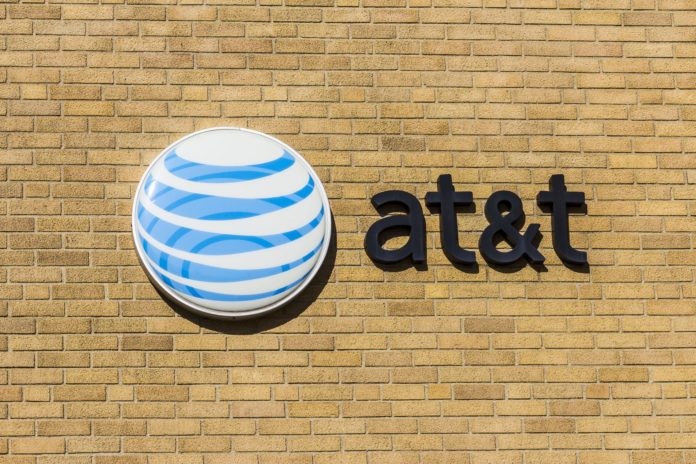AT&T talks up bundles, FirstNet in second quarter call
AT&T is seeing bundles result in its lowest-ever recorded postpaid churn, the company indicated as it reported its second quarter results. The carrier’s net additions continue to be driven largely by internet of things devices and its customer numbers were boosted by nearly half a million subscriber net additions in Mexico.
AT&T claimed 2.3 million wireless net additions in the U.S. and another 476,000 in Mexico. Of its domestic adds, the company said that 267,000 were prepaid customers, with another 127,000 postpaid net subscriber additions and 2.3 million connected devices (IoT adds came largely from AT&T’s enterprise business as opposed to consumer products). AT&T said that it lost 368,000 reseller customers during the quarter. Postpaid tablet net additions were 156,000, with AT&T losing 89,000 postpaid voice subscribers — which it said were “almost all feature phone subscribers” and an improved number compared to previous quarters. Postpaid phone churn was at 0.79%, AT&T reported, and 1.01% for postpaid devices including both phones and tablets. Total churn was 1.28% for the quarter.
“It was another highly competitive quarter in wireless,” said AT&T CFO John Stephens on the results call with investors. “Our competitors tried just about every promotion in the marketing book — in fact, one of them even offered to give away their service for free for a year,” he added, referring to a Sprint promotion during the quarter. Meanwhile, Stephens went on, AT&T was “prudent with its promotions” and played up its content offerings and bundles including wireless service.
Other highlights included:
Time Warner transaction still on track. Stephens said that AT&T still expects to close its $85 billion purchase of Time Warner by the end of the year, and emphasized that contrary to published reports, Randall Stephenson will continue to serve as the combined company’s CEO and chairman. Stephens declined to comment on reports about the post-merger company structure, but said that the “merger integration team is nearly complete with its plans for opportunities that this deal will make possible in advertising, bundling, and providing customers choice.”
Revenues: Revenues were down slightly year-over-year, from $40.5 billion in the year-ago period to $39.8 billion in the most recent quarter due to pressure from fewer phone upgrades and declines in legacy services, according to Stephens.
AT&T Mobility revenues accounted for $17.5 billion of figure, down about 2.3% from $17.9 billion in the same period in 2016. AT&T’s entertainment group generated $12.7 billion in the quarter, with revenues flat from the second quarter of last year. The carrier said that it continues to see an all-time low rate of device upgrades, which continues a trend from last quarter.
AT&T is seeing higher bundle penetration and says that is helping its wireless churn rate. In the two years since the closing of the DirecTV transaction, AT&T said, it has seen growth in penetration of multiple services and a mostly-steady decline in its postpaid wireless churn rate. Its TV subscribers with wireless plans have increased from 5.4% to 6.4% , and its wireless subscribers who have added TV plans are up 31% to nearly 20% of its wireless subscriber base, the company reported.
“We use the combined appeal of wireless, video, and broadband services to offer compelling packages that can’t be easily replicated,” Stephens said, calling that approach “a great way to differentiate our services in the noisy and competitive wireless and video marketplaces.”
Network upgrades and new technology trials are progressing. Stephens noted that AT&T has launched its “5G Evolution” initiative in Austin and Indianapolis, which will reach more than 20 markets by the end of the year. He noted that AT&T has started a second fixed wireless access trial that utilizes millimeter wave spectrum and lets some users in Austin stream DirecTV.
The carrier is also testing LTE License-Assisted Access and Stephens said that AT&T plans to expand LAA testing in San Francisco and Indianapoli, in the coming weeks, he added.
In addition, Stephens said, AT&T continues to make headway on its goal of virtualizing at least 75% of its network: he said that more than 40% of network functions are currently virtualized, and that AT&T should hit 55% by the end of 2017.
FirstNet adds a sixth opt-in state: New Jersey
During the call, Stephens announced that a sixth state has opted into the First Responders Network Authority build-out by AT&T: New Jersey. New Jersey is the first state to opt in which has been involved with a FirstNet early builder project: the state has a fleet of deployables which it has been using to test out Band 14 and the role that deployables might play in the national network. New Jersey has used its mobile sites to provide public safety users with connectivity at events such as Atlantic City beach concerts.
“We’re really off to a fast start” with FirstNet, Stephens said, adding that the carrier is “looking forward to announcing a number of additional states in the near future.”
Stephens spoke of a number of opportunities that FirstNet will open up for AT&T: first, by helping fund infrastructure upgrades that will simultaneously enable the carrier to build out Band 14 coverage while also deploying an additional 60 MHz of its own spectrum holdings, reducing AT&T’s overall costs. Stephens also said that FirstNet will serve as “a starting point to get into smart cities” both in terms of coverage and as a foot in the door to manage other governmental connectivity needs.
“The increased coverage that may be required by FirstNet will provide us an increased opportunity to sell services to other customers, to provide other IoT services, or quite frankly, to reduce … whatever roaming costs we have left here on the domestic side,” Stephens said.
Image copyright: jetcityimage / 123RF Stock Photo

